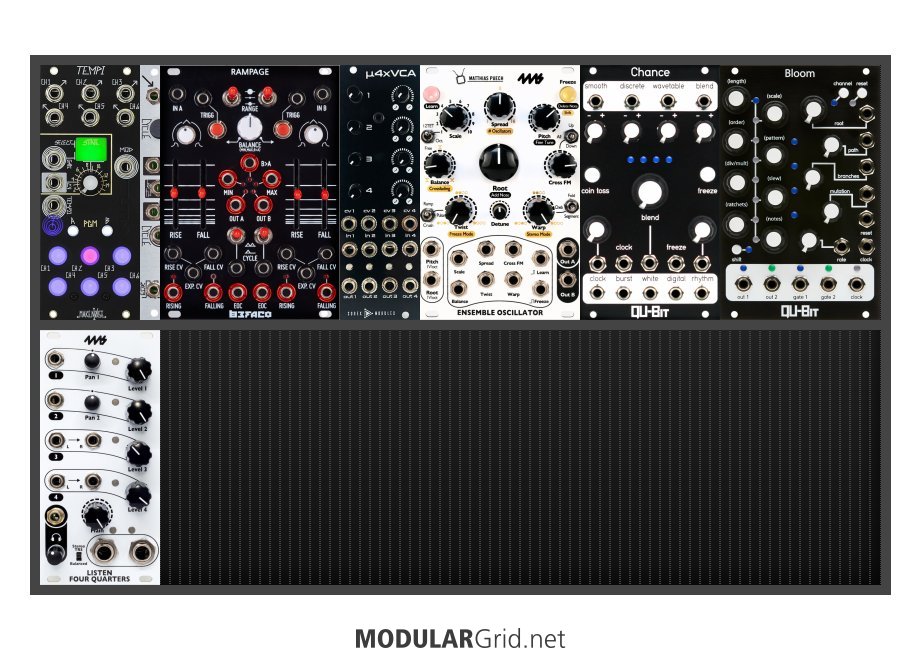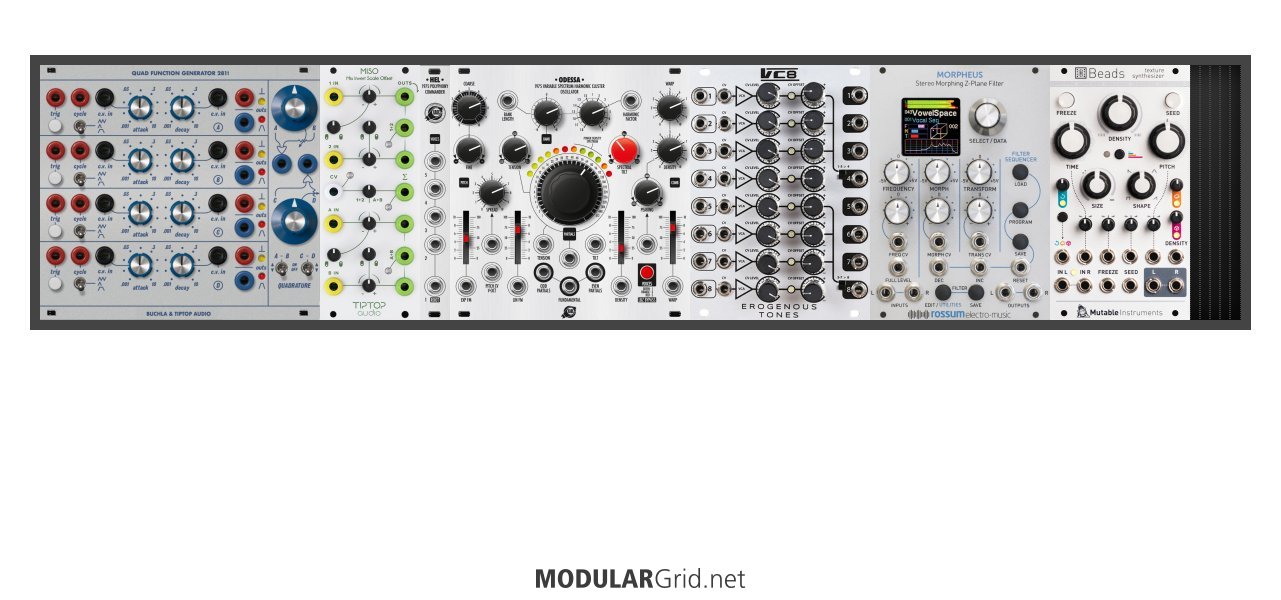Hello,
I have been playing my DFAM and Subharmonicon for quite some time now and have had a lot of fun. I now want to start to complement these two synths with a Eurorack case.
Except to be a complement to the DFAM and Subharmonicon i also want to start to build an instrument that focuses on a lot of random elements and that can be played and performed well in a live setting. I will use my computer with a DAW for effects for now (Why are effects modules so expensive!?). I really like music that builds up over time, from a very slow basic almost naked rythm and melody to an epic peak and then back again. Think cinematic climaxes like in "Interstellar", "Black Panther", "Jurassic park" just to name a few. Not all examples are typical synth music, but just to give you an idea of my "end goal". If there is an end to the rabbit hole that is Eurorack? :)
I have looked at so many modules, instructive videos, read articles, watched performances and so on, to the point that i'm a little bit confused. So please help point me in the right direction.
Here is the he screenshot and I will give my reasoning, with my limited/basic knowledge, of why i have started to lean towards these modules below the image. I will also point out a few faults that I don't know if I need to correct. I have limited myself to one row of the case to start with. 
Pam's new workout:
Honestly, one of the coolest modules I have seen. What doesn't it do? I also feel that it will be very good when I expand my system. For a while I was leaning towards using this as my main sequencer. One negative is the menu in a live setting. I feel that it would take a bit of pre planning and setting up the outputs beforehand.
Maths:
Complements the DFAM and SubH very well with a lot of modulation that the Moogs are missing. All around a great source of modulation with many applications.
Quad VCA:
I like this VCA because it can be both linear and exponential, have four channels and can work as a summing mixer.
Plaits:
With the DFAM and SubH I already have a lot of voices. So this one I'm a little unsure about. But I like it because it's a very flexible voice that is very easy to modulate with random elements to get real cool sounds out of it.
Qbit Chance:
I fell in love with this one as soon as I saw the first video of it in action. So many sources of random modulation with built in attenuverters that I think will pair REALLY well with especially the DFAM.
Qbit Bloom:
One of the more fun pitch sequencers that suits my needs very well. I think it should play extremely well in a live setting. Easy and very direct configuration, can turn a simple sequence to quite complex real fast and back to the original equally fast. Everything can be CV-controlled and can be used on two voices at once.
Mult:
Hey I got 2hp left and a mult will always be useful.
Glaring issues:
- With this initial buy I will only have the filters on the Moogs. Which of course will be useful. But to not have a basic filter dedicated to each voice feels kinda bad...
- I have no mixer except the Quad VCA. Honestly, I don't feel this should be much of a problem initially, but that can be my limited understanding speaking.
Thank you for reading this far. I would love any feedback, recommendations on different modules and pointers in the right direction.
Cheers from Sweden!
Peace,
Peremil


